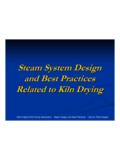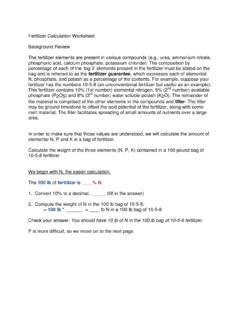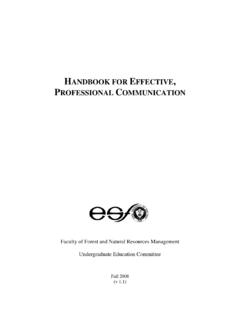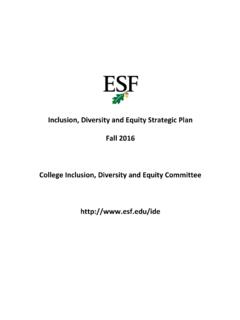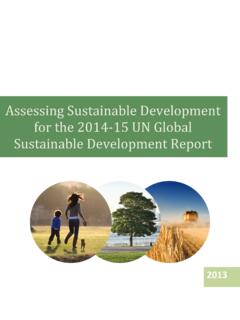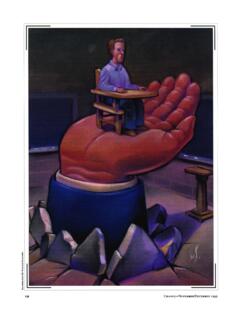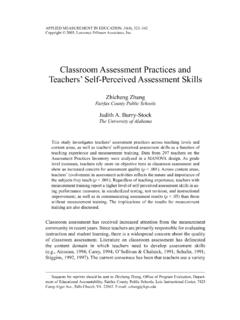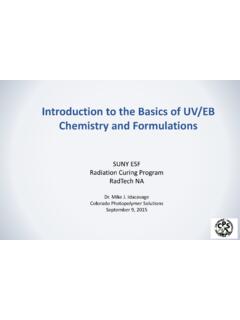Transcription of HANDBOOK FOR EFFECTIVE PROFESSIONAL COMMUNICATION
1 HANDBOOK FOR EFFECTIVE , PROFESSIONAL COMMUNICATION Faculty of Forest and Natural Resources Management undergraduate Education Committee Fall 2008 (v ) Faculty of Forest and Natural Resources Management undergraduate Education Committee Sarah Vonhof, Editor and Compiler Chris Nowak, Chair Lee Herrington Diane Kuehn This HANDBOOK is adapted and excerpted from James M. Hassett, A Guide to EFFECTIVE Communications: a HANDBOOK for Forest engineering Students (Syracuse: SUNY ESF, 2003).
2 TABLE OF CONTENTS COMPONENTS OF AND CONSIDERATIONS FOR 1 Author .. 2 Audience .. 2 Purpose .. 3 Topic .. 4 Occasion .. 4 WRITTEN 5 Electronic 5 Memoranda .. 6 Letters .. 7 Reports and Papers .. 8 ORAL 8 Telephone Conversations .. 9 Interviews .. 9 Presentations .. 10 GRAPHIC 12 12 13 Maps .. 15 18 Plagiarism .. 19 19 WORKS 20 FNRM COMMUNICATION HANDBOOK 1 INTRODUCTION Communicating with others is a part of everyday life. In large part, COMMUNICATION is about explicit language speaking and writing words but COMMUNICATION is also about implicit messages, such as tone, or eye contact.
3 Learning to communicate effectively both implicitly and explicitly is a valuable skill for any PROFESSIONAL . The Faculty of Forest and Natural Resources Management (FNRM) expects our students to communicate effectively and professionally. This HANDBOOK sets forth the basic components of and considerations for EFFECTIVE , PROFESSIONAL COMMUNICATION . It then explains methods for various types of COMMUNICATION : written, oral, and graphic. Students come to ESF with a variety of skill sets and educational backgrounds. In addition, different professors have different expectations and guidelines depending on their courses or educational disciplines.
4 The purpose of this HANDBOOK is not to outline strict policies and procedures. Rather, the Faculty hopes to assist students in honing a variety of COMMUNICATION skills, and to provide a reference source to which students can refer in the absence of individual course or professor guidelines. COMPONENTS OF AND CONSIDERATIONS FOR COMMUNICATION What is EFFECTIVE , PROFESSIONAL COMMUNICATION ? To be EFFECTIVE is to produce the desired result. Thus, in terms of COMMUNICATION , EFFECTIVE means that the message intended to be sent by one person is indeed the same message received by another person.
5 To be PROFESSIONAL is to behave appropriately (with courtesy and respect) and competently (using proper methods and vocabulary). COMMUNICATION can be PROFESSIONAL , yet ineffective. You can speak courteously, but your ideas can be unclear: Please send me the thing. COMMUNICATION can also be EFFECTIVE , but unprofessional. For example, you can confer the thought that something is agreeable by saying, that s cool, dude. The first consideration is which type of COMMUNICATION you will utilize to convey a message. Some additional factors to think about are the level of formality and detail, the importance, the time frame, and the necessity of a response.
6 Do you have an important question that requires an immediate answer? Then a telephone call might be more EFFECTIVE than an e-mail. Do you want to send out notification of an event? The variety of the individuals you are inviting will determine the details: date, time, place; or, perhaps, directions. The next consideration is a set of FNRM COMMUNICATION HANDBOOK 2 components called the rhetorical situation: author, audience, purpose, topic, Author Planning and preparing is part of the COMMUNICATION process. Whether you are authoring a presentation or a paper, you should consider your needs as an author, such as your work habits and your style.
7 You may work best in a quiet environment or be most productive when you have uninterrupted, large time blocks to compose your work. Your instinctive style may be personal, informal, humorous, and open. But some communications require detachment, objectivity, and formality. Knowing your style and being able to edit and adjust to a particular situation is essential to EFFECTIVE COMMUNICATION . Audience The level of formality and intimacy are also determined by the recipients of your COMMUNICATION : your audience. You will communicate differently to a friend (very personally and informally, using slang or jargon) than you will to the reader of a report, or to your classmates in a presentation.
8 You would not necessarily define technical terms when presenting to classmates, but you might have to define ecosystem management if you were sharing your college learning experience with the family over Thanksgiving dinner. Thus vocabulary is one of the considerations relative to your Vocabulary can also embody tone. Tone is the attitude you convey to your audience, and is another consideration. You might employ anger and sarcasm when arguing with a parent, but you would not want to use this tone with a professor. Stating, I need a drop slip signed carries an authoritative tone, and can be interpreted as discourteous.
9 May I please have another copy of the syllabus? conveys a more PROFESSIONAL tone. One way an author expresses tone, formality, and professionalism is through point of view. This HANDBOOK utilizes second person: you should cite your sources or cite your sources ( you is implicit, or understood). Second person is considered by some to be informal, and therefore might be inappropriate in certain 1 Robert Keith Miller and Suzanne S. Webb, Motives for Writing, Second ed.
10 (Mountain View: CA: Mayfield Publishing Company, 1995) 2-7. 2 You should also learn the vocabulary of your discipline and expand your vocabulary throughout your college learning. When you come across a word in a reading assignment or in research that you are not familiar with, look it up in the dictionary. FNRM COMMUNICATION HANDBOOK 3 PROFESSIONAL written COMMUNICATION , such as a scientific report. This HANDBOOK is framed as congenial COMMUNICATION from the Faculty to our students, almost speaking directions (as in a syllabus), so second person works well.
